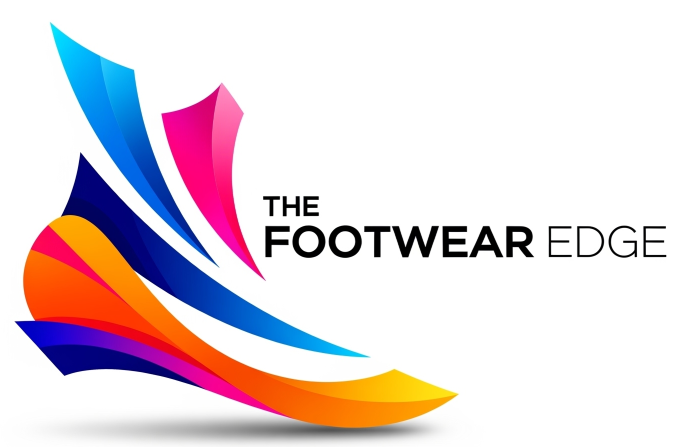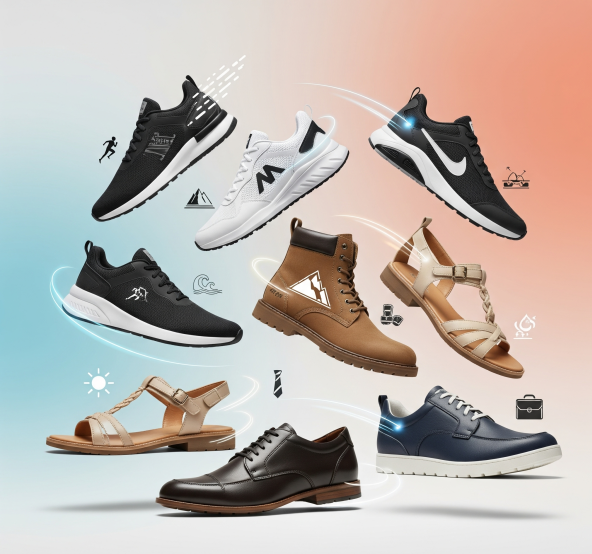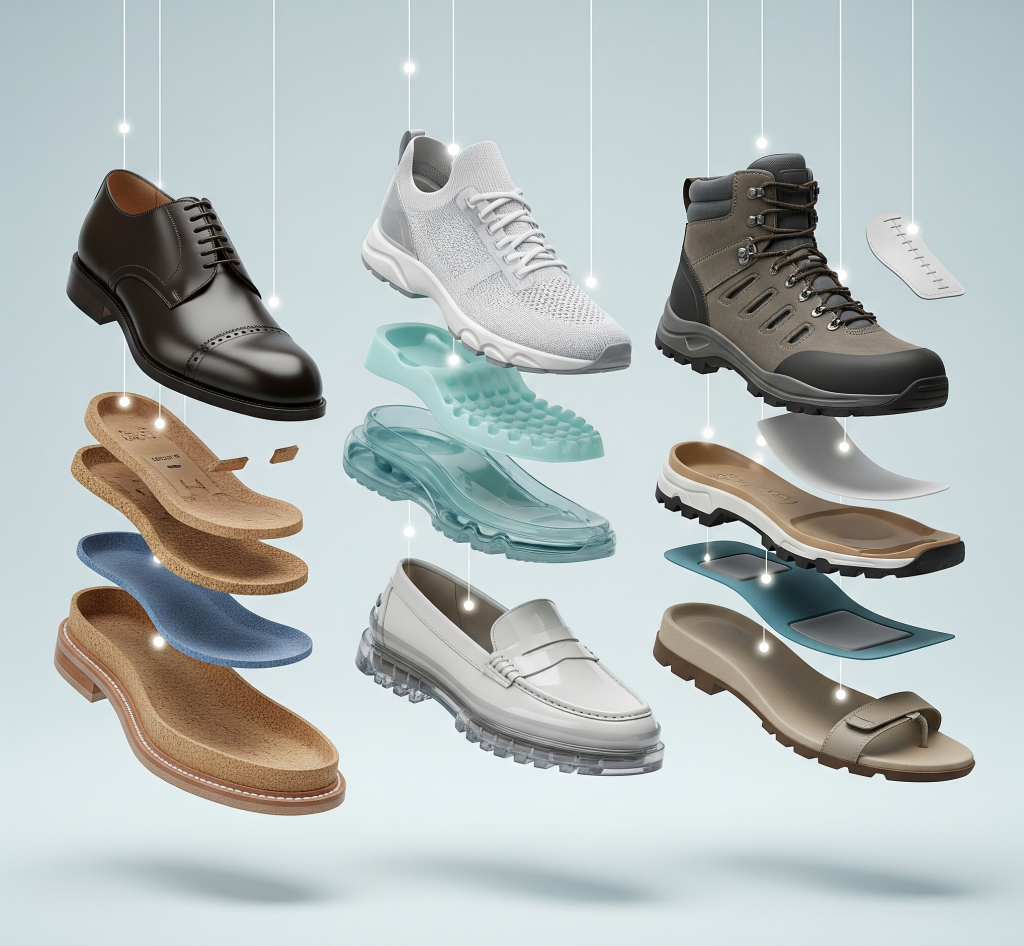Footwear Creation: From Vision to Market Triumph
The journey of crafting footwear is a blend of creativity, precision engineering, and strategic execution. The Development phase transforms bold concepts into tangible, market-ready samples, while the Commercialization phase scales these designs into products that captivate consumers worldwide. Below is a detailed exploration of each stage, from the first prototype to the initial production run, offering a clear roadmap for how iconic shoes come to life.
Development Phase: Crafting the Blueprint
The Development phase is where innovative ideas take shape, evolving through iterative prototyping to create samples that showcase a brand’s vision and functionality. This phase ensures the footwear is ready for sales presentations and production planning.
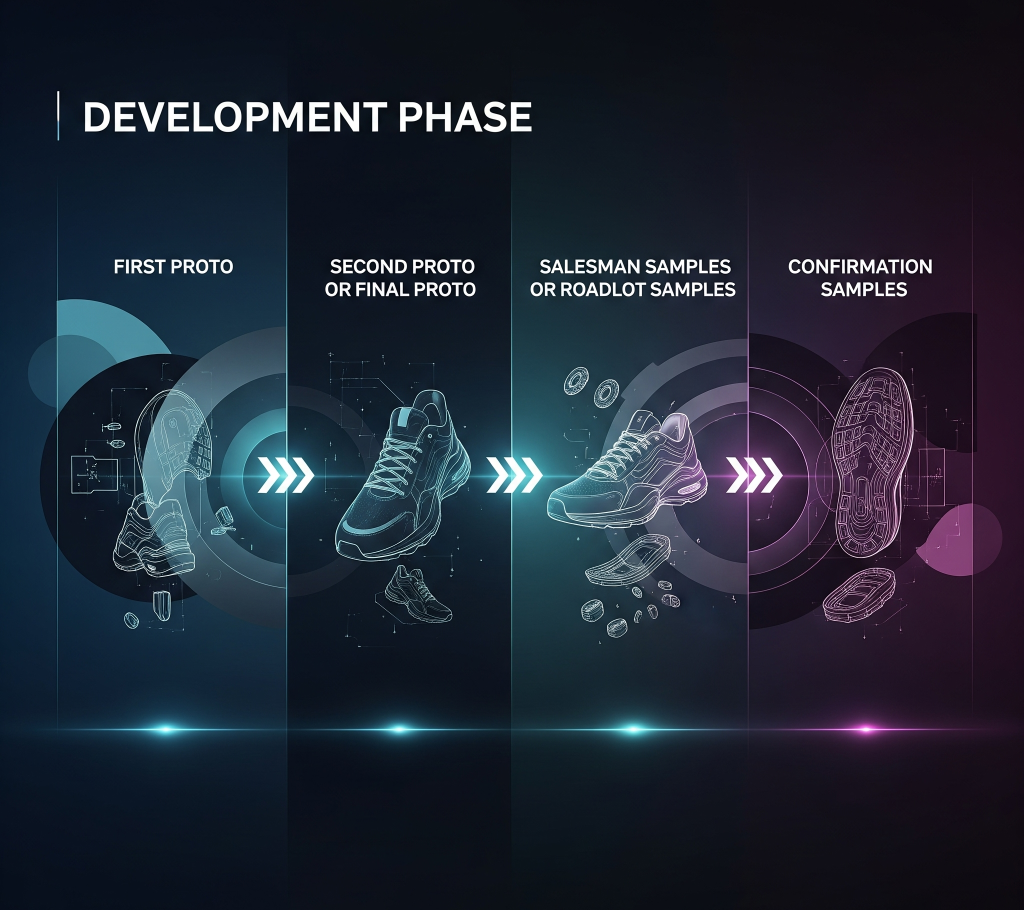

First Proto
The First Proto stage marks the birth of a footwear concept as a physical prototype. This initial model tests the design’s feasibility, aesthetics, and basic functionality. Designers and engineers use tools like CAD (Computer-Aided Design), 3D printing, or handcrafting to create a rough prototype, often with temporary materials. The focus is on evaluating the shoe’s shape, silhouette, and preliminary fit, gathering feedback from internal teams or focus groups. For example, a new running shoe’s first proto might test a novel midsole cushioning design using 3D-printed foam. The deliverable is a preliminary prototype that captures the design intent, setting the stage for refinements.
Second Proto or Final Proto
The Second Proto or Final Proto refines the initial prototype based on feedback, bringing the design closer to its final form. Engineers adjust fit, materials, and construction techniques, incorporating production-intent materials to better mimic the end product. Wear tests and biomechanical analyses (e.g., pressure mapping) ensure comfort and performance align with the brand’s standards. For instance, if the first proto of a hiking boot lacks ankle support, this stage adjusts the collar height and padding. Multiple iterations may occur to perfect the design. The deliverable is a polished prototype that reflects the intended aesthetics and functionality, ready for further validation.
Salesman Samples (SMS) or Roadlot Samples
Salesman Samples (SMS) or Roadlot Samples are near-final samples produced to secure retailer orders and showcase the product at trade shows or sales meetings. Crafted in standard Model sizes (e.g., Men’s US 9 or women’s US 6 – Model Size depends upon the Brand and Market), these samples use production-grade materials and manufacturing techniques to mirror the final product’s look and feel. They include branding elements like logos and colorways, making them market-ready for buyer presentations. For example, Brand display SMS of a new sneaker at a retailer convention to highlight its innovative sole technology. The deliverable is a small batch of high-quality samples that drive pre-orders and marketing buzz.
Confirmation Samples
The Confirmation Samples stage is the final checkpoint before commercialization, ensuring the design is ready for mass production. These samples undergo rigorous testing for fit, durability, and quality consistency, using production-ready materials and processes. Engineers and quality assurance teams verify that the shoe meets performance standards (e.g., traction for athletic shoes) and brand specifications. Any final tweaks to the last (foot-shaped mold) or patterns are made here. For instance, a confirmation sample for a dress shoe might be tested for leather durability and stitching integrity. The deliverable is a set of approved samples, greenlit for the commercialization phase and Production.
| Stage | Description | Key Activities | Deliverable |
|---|---|---|---|
| First Proto | Initial physical model to test design concept and feasibility. | – Create prototype using CAD, 3D printing, or handcrafting. – Test basic aesthetics, shape and fit. – Gather initial feedback. | Rough prototype with temporary materials. |
| Second Proto or Final Proto | Refined prototype addressing feedback from First Proto, closer to final design. | – Adjust fit, materials, and construction based on feedback. – Conduct wear tests and biomechanical analysis. – Finalize design details. | Final prototype with production-intent materials. |
| Salesman Samples (SMS) or Roadlot Samples | Near-final samples for sales and marketing to secure retailer orders. | – Produce small batch in standard size (e.g., men’s US 9). – Use production-grade materials and methods. – Present at trade shows or sales meetings. | Market-ready samples for buyer presentations. |
| Confirmation Samples | Final validation samples to confirm design and manufacturing readiness. | – Test for fit, durability, and quality consistency. – Approve for commercialization. – Finalize production specifications. | Approved samples ready for mass production. |
Commercialization Phase: Scaling for Global Success
The Commercialization phase takes the validated design from the Development phase and prepares it for mass production and market launch. This phase ensures the footwear fits diverse consumers, meets quality standards, and is ready for retail shelves.
Model Fit or T1
The Model Fit or T1 stage validates the shoe’s fit for the standard size, typically the average foot size for the target demographic (e.g., men’s US 9 or women’s US 6). Fit testers evaluate comfort, support, and performance, ensuring the shoe aligns with the brand’s standards. Adjustments to the last or patterns are made if issues like tightness or slippage arise. For example, a casual sneaker’s T1 sample might be tested for all-day comfort on a standard foot shape. The deliverable is an approved fit for the standard size, serving as the baseline for grading to other sizes.
Extremes or T2
The Extremes or T2 stage ensures the shoe fit performs consistently in the extreme Sizes (the Bigger Middle sizes) in the range. Patterns are graded (scaled) from the model fit size, and samples are produced for these extreme sizes. Wear tests confirm that fit, proportion, and functionality remain intact, addressing issues like material stretching or structural integrity. For instance, a running shoe’s T2 testing ensures middle Size maintains the same cushioning and fit as a model size. The deliverable is a validated fit in the wider range, ready for broader testing.
Grading Trials or T3 (SMB – Small, Medium, Big)
The Grading Trials or T3 (SMB – Small, Medium, Big) stage tests fit and performance across a representative range of sizes (small, medium, and big) to ensure consistency. Samples are produced for these sizes, and wear tests verify that the shoe’s design intent—comfort, aesthetics, and functionality—holds true across the spectrum. For example, a basketball shoe might undergo T3 testing to ensure traction and ankle support are consistent from small to large sizes. Final adjustments to grading patterns are made to prepare for making actual Tooling. The deliverable is a set of confirmed patterns for all production sizes.
Pre-Production or T4
The Pre-Production or T4 stage finalizes the product for mass manufacturing. A small batch of samples is produced using final materials, factory processes, and tooling (e.g., cutting knives, molds and lasts). These samples undergo extensive testing for quality, durability, and compliance with industry standards (e.g., ASTM for safety or chemical regulations). Packaging, such as shoeboxes and tags, is also finalized. For example, a pre-production batch of a sneaker might be tested for sole adhesion and stitching consistency. The deliverable is a set of production-ready samples and a fully equipped manufacturing setup, poised for the initial production run.
First Production or Pilot Production
The First Production or Pilot Production stage marks the transition to mass manufacturing with an initial production run to test the factory process and ensure quality. A limited batch is produced on the assembly line, replicating the full-scale production environment. Quality control teams monitor for defects, such as inconsistent stitching or material flaws, and address any manufacturing issues. For instance, a pilot run of a hiking boot might identify and fix issues with sole bonding before scaling up. This stage also aligns the supply chain—securing materials, coordinating factory capacity, and finalizing logistics—for full production. Marketing and distribution teams prepare for the market launch, ensuring retailers receive the product on schedule. The deliverable is an initial batch of market-ready footwear, ensuring a seamless rollout to retailers and consumers. This stage is critical for validating the production process, minimizing risks, and ensuring the footwear meets consumer expectations in quality and performance.
| Stage | Description | Key Activities | Deliverable |
|---|---|---|---|
| Model Fit or T1 | Validates fit for the standard size (e.g., men’s US 9 or women’s US 6). | – Test fit and comfort on Model foot size. – Adjust last or patterns if needed. – Confirm design aligns with brand standards. | Approved fit for standard Model size, ready for grading. |
| Extremes or T2 | Ensures fit and performance across smallest and largest sizes. | – Grade patterns to Bigger Middle Sizes – Test fit and functionality on extreme sizes. – Adjust for consistency. | Validated fit on the Bigger Sizes |
| Grading Trials or T3 (SMB – Small, Medium, Big) | Tests fit and performance across a range of sizes (small, medium, big). | – Produce samples in small, medium, and large sizes. – Conduct wear tests to ensure consistency. – Finalize grading patterns for tooling (Cutting Knives, Mold, Tooling, Last) | Confirmed patterns for all production sizes. |
| Pre-Production or T4 | Finalizes product for mass production with production-ready samples. | – Produce small batch with Actual Tooling, final materials, factory processes. – Test for quality, durability, and compliance (e.g., ASTM standards). – Finalize tooling and packaging. | Production-ready samples and manufacturing setup. |
| First Production or Pilot Production | Initial production run to test manufacturing process and quality. | – Conduct pilot run on factory line. – Monitor quality and address issues. – Prepare for full-scale production and market launch. | Initial batch of market-ready footwear. |
Development & Commercialization Flow Process Chart
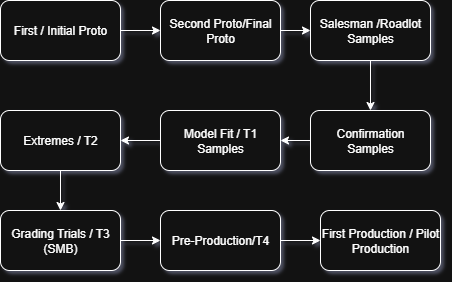
Conclusion
The footwear development and commercialization process is a meticulously orchestrated journey, blending creativity, technical precision, and strategic planning. The Development phase crafts a vision into tangible, market-ready samples through iterative prototyping, while the Commercialization phase scales these designs into high-quality products ready for global markets. From the innovative spark of the First Proto to the polished execution of First Production, each stage ensures that the final footwear delivers on style, performance, and consumer expectations.
Note: This overview provides a standardized framework for the footwear development and commercialization process. Individual brands may adopt unique terminology and tailored approaches to align with their strategic goals and operational workflows.
